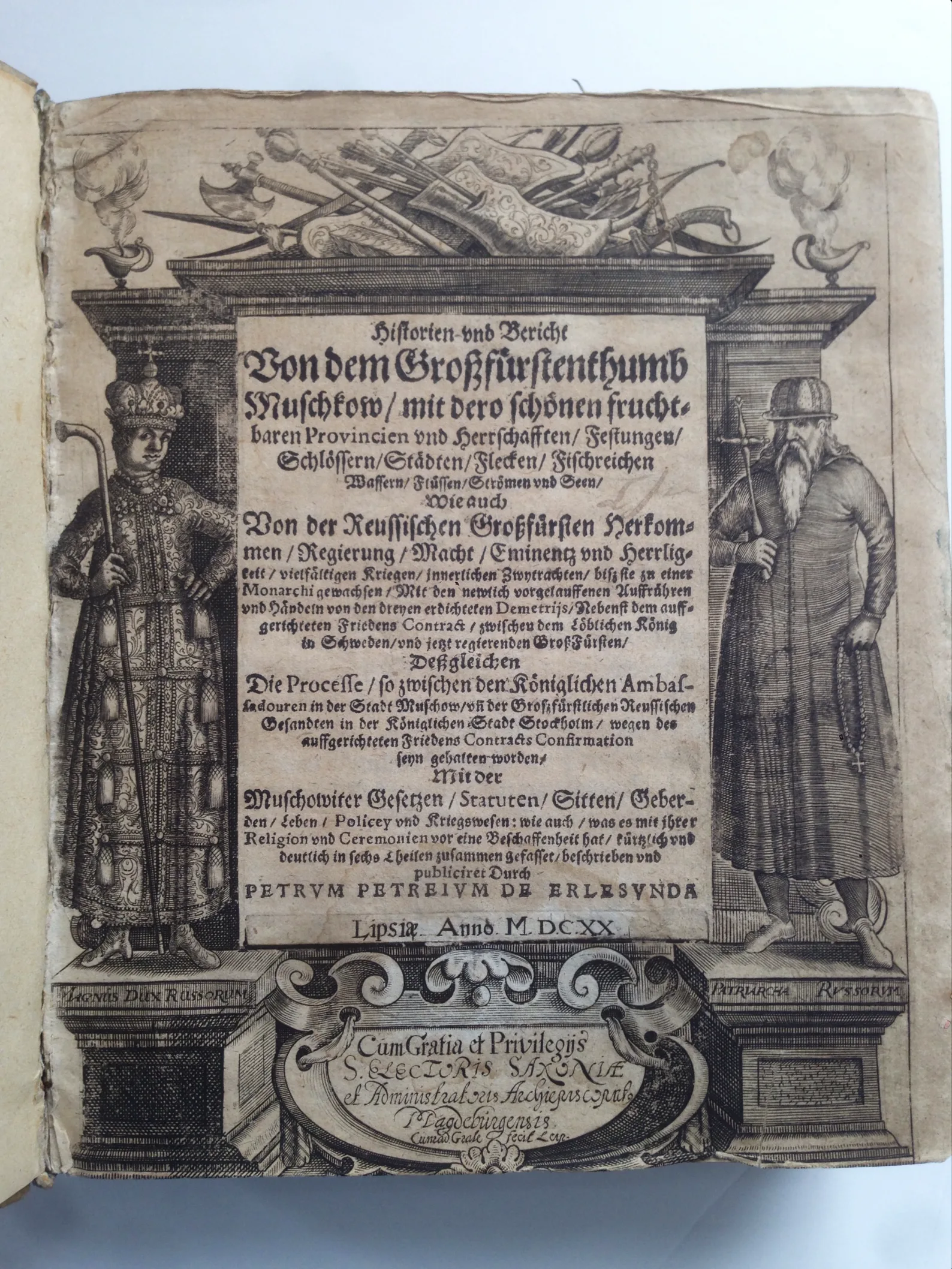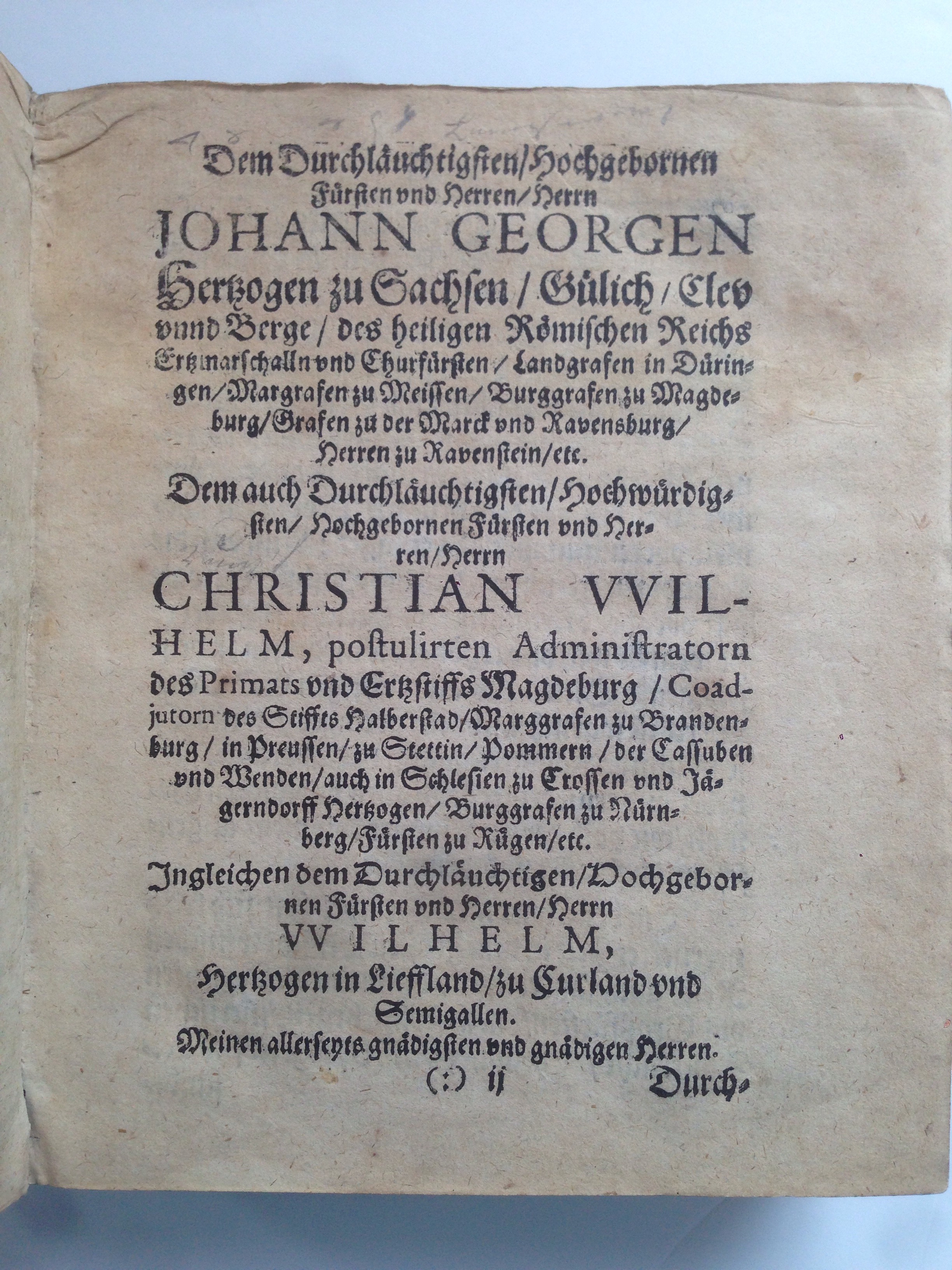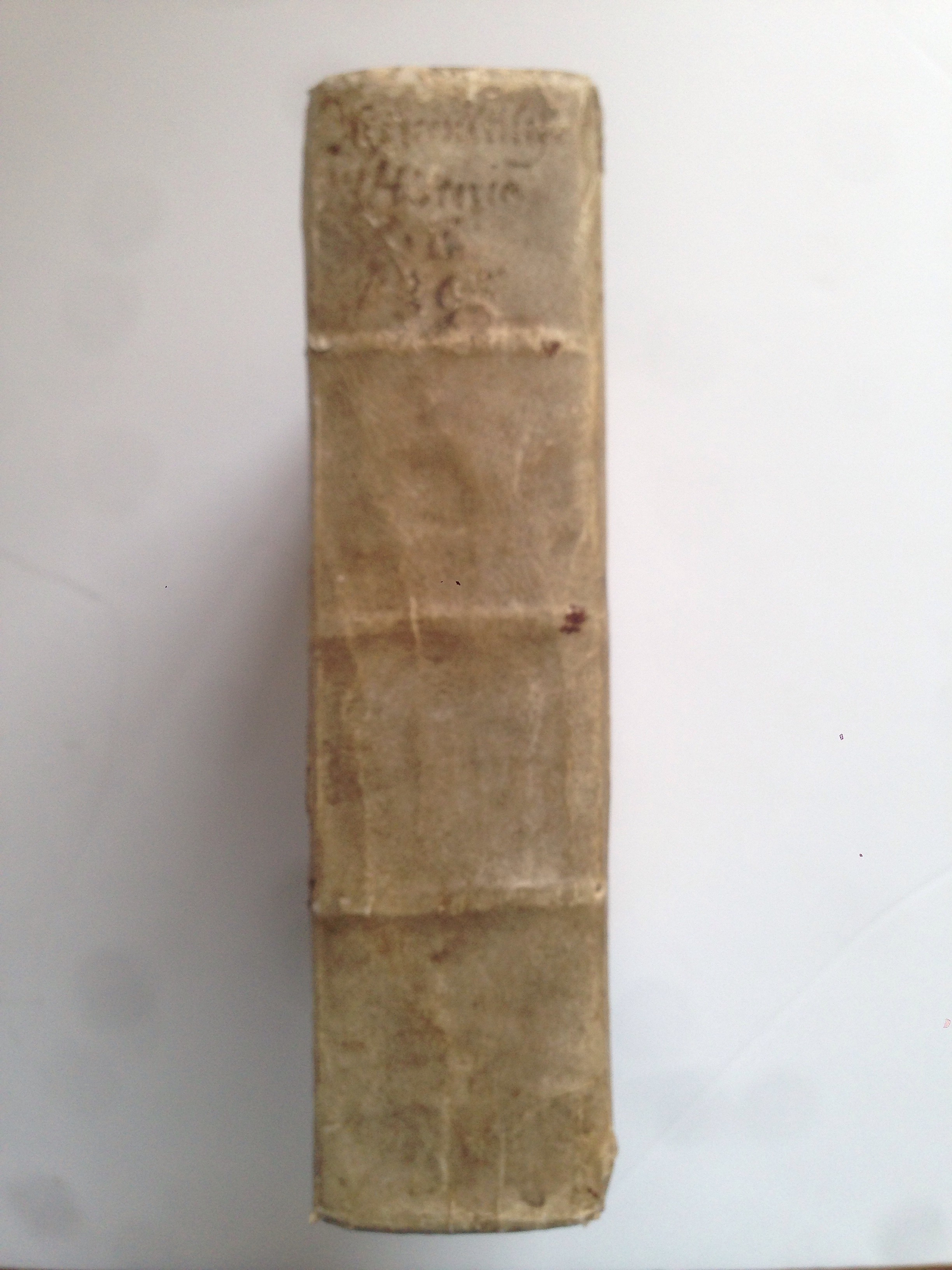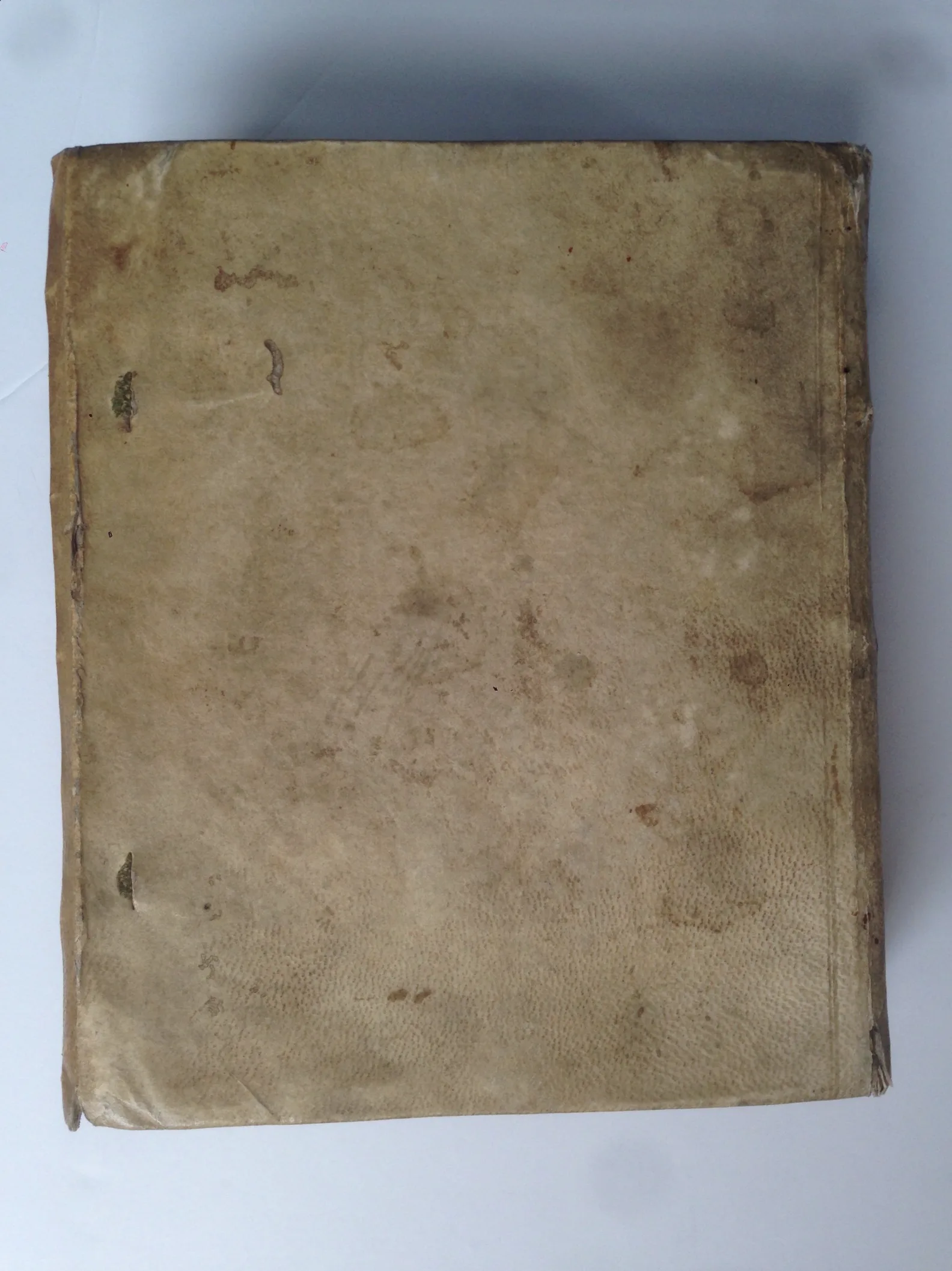PETREIUS, Petrus
THE FIRST GERMAN ACCOUNT OF RUSSIA
Historien und Bericht von dem Grossfürstenthumb Muschkow.
Leipzig, Typis Bauaricis, 1620£3,250.00
FIRST EDITION thus. 4to. pp. (xxii) 695 (i). Gothic letter. Charming engraved architectural t-p with standing figures of the emperor and patriarch of Russia, burning lamps, and Russian weapons, very slightly trimmed at front. Woodcut initials, headpieces, and typographical ornaments. General light age browning, minor water stain to upper outer corner of first gathering, tiny hole to text at end of dedication section not affecting reading, small rust hole mostly interlinear to one leaf, faded inscriptions in C17 hand to t-p and last page. Good, well-margined copy in C17 limp vellum, yapp edges, lacking ties, minor marginal water stain to final leaf, C17 inscriptions and numbers to pastedowns, early case mark to spine, fepp renewed.
Very good first edition of a most influential C17 account of the duchy of Muscovy and the Russian provinces. Petrus Petreius (Pers Persson) (1570-1620) was a Swedish diplomat and intelligencer from Uppsala, who worked for several years in Russia in the early C17 century. Petreius first published his account in Swedish, as ‘Regni Muschowitici Sciographia’ (Stockholm, 1615), marking a new attitude towards the perception of Russians in Sweden. The ‘Sciographia’ was translated into German and published in Leipzig in 1620, with additional dedications and an appendix. The six parts are devoted to the cities and provinces, history (from Rurik to 1612), political ceremonies, warfare, customs, and religious rites of Russia and its people. Most of the second part is concerned with the period spanning the reign of Boris Godunov and the start of the Romanov rule. Petreius relied heavily, especially for the section on the False Dimitris, on the yet unpublished Latin eyewitness account by Konrad Bussow. He interspersed it with personal observations based on direct experience, like the sight of the corpses of Fyodor II Borisovich and his mother bearing the imprint of the ropes which strangled them.
‘Historien und Bericht’ is of fundamental importance for early modern European first-hand knowledge of Russian culture. Petreius adapted for the German language words relating to Russian society, making them more accessible to his new readers by avoiding, unlike in the Swedish original, Russian borrowings. In his account, the complex meaning of the term ‘Bojar’ is simplified to the title of ‘nobleman’ (‘Adel’ or ‘Herr’), and ‘keysare’, the same term used to address the German Holy Roman Emperors, appears as a translation of ‘czar’ in the reported speeches of Russian people. The ‘Historien und Bericht’ was among the sources used by I. M. Karamzin for his famous ‘History of the Russian State’ (‘ ’) of 1843.
BL STC Ger. P437; Graesse V, 237; Adelung II, P238-58; JFB P199. Not in Brunet. See . . , ‘ “Regni Muschovitici sciographia” ’, 72 (2011), pp. 175-86.In stock








